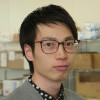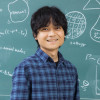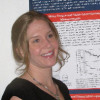151 events in 2022
-
Seminar

Journal Club: Phase separation in a many-component system with random interactions
March 31 (Thu) at 10:00 - 11:00, 2022
Kyosuke Adachi (Special Postdoctoral Researcher, Nonequilibrium Physics of Living Matter RIKEN Hakubi Research Team, RIKEN Center for Biosystems Dynamics Research (BDR))
Several kinds of protein condensates have been observed in living cells, and the liquid-liquid phase separation is regarded as a basic mechanism of the condensate formation. However, given that there are thousands of protein species in a cell, it is not clear how the number and the composition of distinct condensates are controlled. One of the physics approaches to this problem is considering a model of many components with random interactions. In this Journal Club, I will introduce a recent paper [1] that applies random-matrix theory to the phase separation dynamics.
Venue: via Zoom
Event Official Language: English
-
Seminar
Hydrodynamic theory of electron and spin transport
March 30 (Wed) at 13:30 - 15:00, 2022
Gen Tatara (Team Leader, Spin Physics Theory Research Team, RIKEN Center for Emergent Matter Science (CEMS))
Electron and spin transports in metals are theoretically studied from a hydrodynamic viewpoint by calculating momentum flux density as a linear response to an applied electric field. Dissipative (ohmic) fluid regime is considered. An angular momentum generation in chiral (Weyl) system and spin motive force (voltage generation) by magnetization-vorticity coupling in anomalous Hall system are discussed. The spin Hall effect is argued from the viewpoint of a spin-vorticity coupling.
Venue: via Zoom
Event Official Language: English
-
Seminar
Local and global topology for Dirac points with multi-helicoid surface states
March 24 (Thu) at 17:00 - 18:15, 2022
Tiantian Zhang (Specially Appointed Assistant Professor, School of Science, Tokyo Institute of Technology)
Though topological invariants defined for topological semimetals are usually local ones, they also have a global nature. For example, the Z type local monopole charge C for Weyl points, has a global nature, telling us its influence to the rest of the Brillouin zone, giving rise to bulk-surface correspondence associated with helical surface states. In Dirac systems, helical surface states are not guaranteed due to C=0. However, a new bulk-surface correspondence associated with double/quad-helicoid surface states (DHSSs/QHSSs) can be obtained for Dirac points with the protection of a Z2 type monopole charge Q, which is defined in terms of the time-reversal (T)-glide (G) symmetry (TG)2= -1. Here we study the topology of Q for Z2 Dirac points and establish its bulk-surface correspondence with strict proofs. We find that Q is equivalent to the G-protected Z2 invariant v mathematically and physically in Z2 Dirac systems. This result is counterintuitive, since v is always trivial in T-preserving gapped systems, and was thought to be ill-defined in gapless systems. We offer a gauge-invariant formula for Q, which is associated with DHSSs in both the spinless and spinful systems with single G. Q is formulated in a simpler form in spinless systems with two vertical G, associated with QHSSs, which is also entangled with filling-enforced topological band insulators in three space groups when a T-breaking perturbation is introduced. Since Q is ill-defined in spinful systems with two vertical G, QHSSs will not be held. Material candidate Li2B4O7 together with a list of possible space groups preserving QHSSs are also proposed for demonstration on our theory and further studies. *Detailed information about the seminar refer to the email.
Venue: via Zoom
Event Official Language: English
-
Seminar

Criticality in stochastic SIR model for infectious diseases based on path-integral approach
March 24 (Thu) at 10:00 - 11:00, 2022
Shigehiro Yasui (Assistant Professor, Center of Medical Information Science, Kochi Medical School)
The susceptible-infected-removed (SIR) model provides us with a basic scheme for the analysis of the epidemic infectious diseases such as the COVID-19. In this presentation, we focus on the stochastic SIR model which describes the stochastic time-evolutions of the population sizes for the susceptible, infected, and removed individuals. We consider the master equation (Kolmogorov forward equation) for the infection transmission and recovery processes (SI->II and I->R), and transform it into the Hamiltonian formalism with the Fock space a la quantum physics. According to the Doi-Peliti prescription, furthermore, we introduce the path-integral formalism similar to the quantum field theory, and perform the perturbative and non-perturbative calculations for the time-evolution of the susceptible, infected, and removed populations. We find that the critical value Rc of the basic reproduction number, which determines the spreading or the convergence of the infectious diseases, can be modified by the stochastic effects in comparison to the Rc in the conventional deterministic SIR model.
Venue: via Zoom
Event Official Language: English
-
Seminar
Explore the possibility to control hurricanes
March 18 (Fri) at 16:00 - 18:00, 2022
Lin Li (Postdoctoral Researcher, Prediction Science Laboratory, RIKEN Cluster for Pioneering Research (CPR))
Hurricanes, also known as tropical cyclones and typhoons, are the biggest and the most devastating storms on Earth. In this seminar, I will talk about the possibility to control hurricanes with existing human capability. Energetically speaking, controlling hurricanes is a very challenging task due to a large gap: hurricanes are gigantic heat engines with a power of around 1014 Watt, while the most powerful manmade engines have the power of only 108 Watt. This six-order-magnitude gap is the major obstacle toward using existing engines to control hurricanes. To fill in this gap, we propose to utilize the chaotic nature of hurricanes, namely, the sensitivity of a chaotic system to its initial condition, to control hurricanes. In this presentation, I will first review the basics of hurricanes and existing chaos control methods, and then present my thoughts on hurricane control and preliminary results I acquired since joining Prediction Science Laboratory. Future directions on using reinforcement learning to control hurricanes will also be discussed. Since it is a very challenging task, I welcome any discussions, questions, and comments. I hope we can make the hurricane-risk-free future come earlier.
Venue: via Zoom
Event Official Language: English
-
Seminar

Phylogenomics revealed one of the problems for phylogeny –The monophyly of Archaeplastida including land plant-
March 17 (Thu) at 10:00 - 11:00, 2022
Euki Yazaki (Postdoctoral Researcher, RIKEN Interdisciplinary Theoretical and Mathematical Sciences Program (iTHEMS))
There are many problems between large eukaryotic lineages. One of these is the monophyly of Archaeplastida to which land plants and other photosynthetic organisms belong. Although it has been believed that the Archaeplastida are monophyletic because they share common chloroplast structures, several large-scale molecular phylogenetic analyses have failed to reproduce this phylogenetic relationship. In this study, by enhancing the taxon sampling of the data set, the monophyly of Archaeplastida was successfully reconstructed, showing that the taxa critical for the reconstruction are present. Through detailed molecular phylogenetic and statistical analyses, it was estimated that the lack of monophyly ofArchaeplastida is due to the specific evolutionary signals of certain taxa.
Venue: via Zoom
Event Official Language: English
-
Special Lecture

[Shigefumi Mori and Takashi Sakajo Special Talk] How is mathematics utilized in society? - Exploring the Essence of Mathematical Research
March 12 (Sat) at 13:00 - 14:30, 2022
Tetsuo Hatsuda (Program Director, RIKEN Interdisciplinary Theoretical and Mathematical Sciences Program (iTHEMS))
Takashi Sakajo (Professor, Division of Mathematics and Mathematical Sciences, Graduate School of Science, Kyoto University)
Shigefumi Mori (Director-General, Kyoto University Institute for Advanced Study (KUIAS))Venue: via Zoom
Event Official Language: Japanese
-
Seminar
Extracting rules from trained machine learning models with applications in Bioinformatics
March 11 (Fri) at 16:00 - 18:00, 2022
Pengyu Liu (Postdoctoral Researcher, Medical Data Mathematical Reasoning Team, RIKEN Information R&D and Strategy Headquarters (R-IH))
Recently, Machine learning methods have achieved great success in various areas. However, some machine learning-based models are not explainable (e.g., Artificial Neural Networks), which may affect the massive applications in medical fields. In this talk, we first introduce two approaches that extract rules from trained neural networks. The first one leads to an algorithm that extracts rules in the form of Boolean functions. The second one extracts probabilistic rules representing relations between inputs and the output. We demonstrate the effectiveness of these two approaches by computational experiments. Then we consider applying an explainable machine learning model to predict human Dicer cleavage sites. Human Dicer is an enzyme that cleaves pre-miRNAs into miRNAs. We develop an accurate and explainable predictor for the human Dicer cleavage site -- ReCGBM. Computational experiments show that ReCGBM achieves the best performance compared with several existing methods. Further, we find that features close to the center of pre-miRNA are more important for the prediction.
Venue: via Zoom
Event Official Language: English
-
Seminar
Toward modeling complete supernova neutrino emissions
March 11 (Fri) at 16:00 - 17:00, 2022
Yudai Suwa (Associate Professor, Department of Earth Science and Astronomy, Graduate School of Arts and Sciences, The University of Tokyo / Affiliate Associate Professor, Yukawa Institute for Theoretical Physics, Kyoto University)
Neutrinos are guaranteed observable from the next Galactic supernova (SN). Optical lights and gravitational waves are also observable but can be difficult to observe if SN location in the galaxy and the explosion details are unsuitable. The key to the next coming SN observation will be understanding various physical quantities using neutrinos first and then connecting them to other signals. In particular, understanding neutrinos in the late time (> 1 sec after the onset of explosion) is essential, since physics in this time scale has much smaller uncertainties than that of the early time. We should construct a simple and understandable neutrino model based on the late-time emissions. It allows us to tackle the physics in the early phase like the explosion mechanism. In this talk, I will discuss the following topics: 1) how to model the complete neutrino emissions from the very early phase up to the last observable event. 2) what physical quantities (e.g., mass and radius of neutron stars) can be extracted from observations using large statistical neutrinos as physics probes. 3) how to use these extracted physical quantities to link with the explosion mechanism of SN and multi-messenger observations.
Venue: via Zoom
Event Official Language: English
-
Seminar
Nonperturbative cavity/waveguide quantum electrodynamics and dissipative quantum phase transition
March 10 (Thu) at 13:30 - 15:00, 2022
Yuto Ashida (Associate Professor, Graduate School of Science, The University of Tokyo)
Strong coupling between matter and quantized electromagnetic modes in cavity or waveguide may offer yet another approach of controlling equilibrium phases or dynamics of many-body systems. Recent developments have realized such strong light-matter interaction in genuinely quantum and nonperturbative regimes, where conventional approximate theoretical methods cannot be applied in general. I will talk about how one can analyze strongly coupled quantum light-matter systems at arbitrary interaction strengths on the basis of an asymptotically disentangling unitary transformation [1,2]. I discuss its application to construction of tight-binding Hamiltonians, dynamics of bound states in the continuum, and revisiting dissipative quantum phase transition in resistively shunted Josephson junctions [3].
Venue: via Zoom
Event Official Language: English
-
Seminar

Independent regulation of multiple checkpoints in cell-cycle network system -Biological function originated in the law of localization-
March 10 (Thu) at 10:00 - 11:00, 2022
Atsushi Mochizuki (Professor, Institute for Frontier Life and Medical Sciences, Kyoto University)
In cell cycle, G1-S and G2-M checkpoints are regulated by different protein complexes, Cdc2-Cdc13 and Cdc2-Cig2, respectively. For a normal mitosis, activity of two complexes should rise specifically at different timing. However, the complex formations share common species of proteins and activation reactions conform a complicated network. We study how independent regulation of two checkpoints is realized in the network system by “structural sensitivity analysis”, which was previously established by us. The analyses clarified that activities of two complexes are regulated by disjoint sets of reaction parameters in the system. A series of non-trivial behaviors are generated by “buffering structures with an intersection”, which can generally appear in chemical reaction network including complex formation.
Venue: via Zoom
Event Official Language: English
-
External Event
Fundamentals Fest, mini Pre-event on Science "Exploring and Bridging: The Potential of Basic Science"
March 10 (Thu) at 8:00 - 9:30, 2022
Makiko Sasada (Associate Professor, Graduate School of Mathematical Sciences, The University of Tokyo)
Tetsuo Hatsuda (Program Director, RIKEN Interdisciplinary Theoretical and Mathematical Sciences Program (iTHEMS))
Juichi Yamagiwa (Director-General, Research Institute for Humanity and Nature)Unlike applied science and technology, basic science has a high degree of independence, making it difficult to have contact with society. In today's world where science and technology are maturing, there are many issues on how to bridge the gap between academic knowledge and society from the aspect of science/technology and ethics. However, there are not many opportunities to discuss such bridging activities. In this session, we would like to discuss the peculiarities and possibilities to bridge the basic science and society. Program (Morning) 8:00-8:10 Introduction (What is the Fundamentals Fest) 8:10-8:40 Self-introduction by speakers 8:40-9:20 Discussion 9:20-9:30 Questions and Answers Participation Fee: Free See related links for details.
Venue: via YouTube Live
Event Official Language: Japanese
-
Seminar
Introduction to stability conditions 2
March 9 (Wed) at 16:00 - 17:30, 2022
Naoki Koseki (Postdoctoral Research Associate, School of Mathematics, University of Edinburgh, UK)
In 2002, Bridgeland defined the notion of stability conditions on a triangulated category, motivated by string theory and mirror symmetry. Since then, Bridgeland stability conditions have been found very useful not only in Mathematical Physics, but also in various areas of Pure Mathematics. In the first part, I will review basic background and open problems in the theory of Bridgeland stability conditions. In the second part, I will explain recent developments of the theory, especially its applications to algebraic geometry.
Venue: via Zoom
Event Official Language: English
-
Seminar
Introduction to stability conditions 1
March 2 (Wed) at 16:00 - 17:30, 2022
Naoki Koseki (Postdoctoral Research Associate, School of Mathematics, University of Edinburgh, UK)
In 2002, Bridgeland defined the notion of stability conditions on a triangulated category, motivated by string theory and mirror symmetry. Since then, Bridgeland stability conditions have been found very useful not only in Mathematical Physics, but also in various areas of Pure Mathematics. In the first part, I will review basic background and open problems in the theory of Bridgeland stability conditions. In the second part, I will explain recent developments of the theory, especially its applications to algebraic geometry.
Venue: via Zoom
Event Official Language: English
-
External Event

RIKEN Day: Let's Talk with Researchers! "Listening to the Ringing of a Black Hole"
February 25 (Fri) at 18:00 - 18:30, 2022
Naritaka Oshita (Special Postdoctoral Researcher, RIKEN Interdisciplinary Theoretical and Mathematical Sciences Program (iTHEMS))
In the February RIKEN Day, we will have a talk with Naritaka Oshita, a researcher who is researching on the theme of "Listening to the Ringing of a Black Hole." See related links for details.
Venue: via Zoom
Event Official Language: Japanese
-
Seminar
How to understand Earth science system using data science
February 25 (Fri) at 16:00 - 18:00, 2022
Kaman Kong (Postdoctoral Researcher, Computational Climate Science Research Team, RIKEN Center for Computational Science (R-CCS))
Hi everyone, my name is Kaman Kong. After I graduated from Nagoya University last April, I joined the computational climate science research team, R-CCS at Kobe. Although I have still not yet had the important results now, I would like to share my idea and future plan here. In this talk, different from the previous seminar, I would like to highlight how to use data science approaches to understand our Earth system science. In the first 60 minutes, I would like to share my research experiences in ecosystems, dust outbreaks, and atmospheric sciences and try to discuss their limitation in my study. After a 10-minute break, the 30 minutes will be spent discussing the potential methodology to overcome these limitations and new opportunities and challenges in Earth system science. (Part 1) In the first 60 minutes, I would like to talk about the relationships among ecosystems, dust outbreaks, and atmospheric conditions. I used the models of dust and ecosystem to explore seasonal variations of threshold wind speed, an index of soil susceptibility to dust outbreak, and its relations with land surface conditions, such as plant growth and soil moisture and temperature changes, in the Mongolian grasslands. On the other side, I am improving the weather forecast model to accurately predict dust emission and discuss its effects on the Earth system. Meanwhile, I am integrating the dust model into the ecosystem model. During this period, I realized there are many uncertainties of simulation. (Part 2) In the second 30 minutes, I will explain these limitations as I mentioned before and try to discuss how to solve these problems. For example, using deep learning to identify the green and brown plants separately for discussing their different effect on the dust model. And, used data assimilation (e.g., EnKF and Bayesian calibration) to improve the simulated performance of land surface parameters (e.g., soil moisture and vegetation).
Venue: via Zoom
Event Official Language: English
-
Seminar
How is turbulence born: Spatiotemporal complexity and phase transition of transitional fluids
February 24 (Thu) at 17:00 - 18:15, 2022
Hong-Yan Shih (Assistant Research Fellow, Institute of Physics, Academia Sinica, Taiwan)
How a laminar flow becomes turbulence has been an unsolved problem for more than a century and is important in various industrial applications. Recently precise measurements in pipe flow experiments showed non-trivial spatiotemporal complexity at the onset of turbulence. Based on numerical evidence from the hydrodynamics equations, we discovered the surprising fact that the fluid behavior at the transition is governed by the emergent predator-prey dynamics of the important long-wavelength mode, leading to the mathematical prediction that the laminar-turbulent transition is analogous to an ecosystem on the edge of extinction. This prediction demonstrates that the laminar-turbulent transition is a non-equilibrium phase transition in the directed percolation universality class, and provides a unified picture of transition to turbulence emerging in systems ranging from turbulent convection to magnetohydrodynamics. *Detailed information about the seminar refer to the email.
Venue: via Zoom
Event Official Language: English
-
Seminar

Stator dynamics of the bacterial flagellar motor
February 24 (Thu) at 17:00 - 18:00, 2022
Ashley Nord (Researcher, Centre de Biologie Structurale, CNRS, France)
Rubén Pérez-Carrasco (Lecturer in Theoretical Systems Biology, Faculty of Natural Sciences, Department of Life Sciences, Imperial College London, UK)The bacterial flagellar motor is the membrane-embedded rotary molecular motor which turns the flagellum that provides thrust to many bacteria for swimming, swarming, and chemotaxis. This large multimeric complex, composed of a few dozen constituent proteins, is a hallmark of dynamic subunit exchange. The stator units are inner-membrane ion channels which dynamically bind to the cell wall and convert electrochemical energy into torque which is applied to the rotor. The dynamic exchange of stator units is a function of the viscous load on the flagellum, allowing the bacterium to adapt to its local environment, though the molecular mechanisms of this mechanosensitivity remain unknown. Previously, we have shown that stator units behave as a catch bond, a counterintuitive bond which becomes stronger under applied tension. Here, by actively perturbing the steady-state stator stoichiometry of individual motors, we reveal a stoichiometry-dependent asymmetry in stator remodeling kinetics. We interrogate the potential effect of next-neighbor interactions and local stator unit depletion and find that neither can explain the observed asymmetry. We then simulate and fit two mechanistically diverse models which recapitulate the asymmetry, finding assembly dynamics to be particularly well described by a two-state catch-bond mechanism.
Venue: via Zoom
Event Official Language: English
-
Seminar
iTHEMS - R-CCS(FTRT) Joint Online Seminar: Second order chiral phase transition in three flavor quantum chromodynamics?
February 18 (Fri) at 16:30 - 18:00, 2022
Gergely Fejos (Assistant Professor, Institute of Physics, Eötvös Loránd University, Hungary)
We calculate the renormalization group flows of all renormalizable interactions in the three dimensional Ginzburg--Landau potential for the chiral phase transition of three flavor quantum chromodynamics [1]. On the contrary to the common belief we find a fixed point in the system that is able to describe a second order phase transition in the infrared. This shows that longstanding assumptions on the transition order might be false. If the transition is indeed of second order, our results can also be interpreted as indirect evidence that the axial anomaly restores at the transition temperature.
Venue: via Zoom
Event Official Language: English
151 events in 2022
Events
Categories
series
- iTHEMS Colloquium
- MACS Colloquium
- iTHEMS Seminar
- iTHEMS Math Seminar
- DMWG Seminar
- iTHEMS Biology Seminar
- iTHEMS Theoretical Physics Seminar
- Information Theory SG Seminar
- Quantum Matter Seminar
- ABBL-iTHEMS Joint Astro Seminar
- Math-Phys Seminar
- Quantum Gravity Gatherings
- RIKEN Quantum Seminar
- Quantum Computation SG Seminar
- Asymptotics in Astrophysics SG Seminar
- GW-EOS WG Seminar
- DEEP-IN Seminar
- NEW WG Seminar
- Lab-Theory Standing Talks
- QFT-core Seminar
- STAMP Seminar
- QuCoIn Seminar
- Number Theory Seminar
- Academic-Industrial Innovation Lecture
- Berkeley-iTHEMS Seminar
- iTHEMS-RNC Meson Science Lab. Joint Seminar
- RIKEN Quantum Lecture
- Theory of Operator Algebras
- iTHEMS Intensive Course-Evolution of Cooperation
- Introduction to Public-Key Cryptography
- Knot Theory
- iTHES Theoretical Science Colloquium
- SUURI-COOL Seminar
- iTHES Seminar
